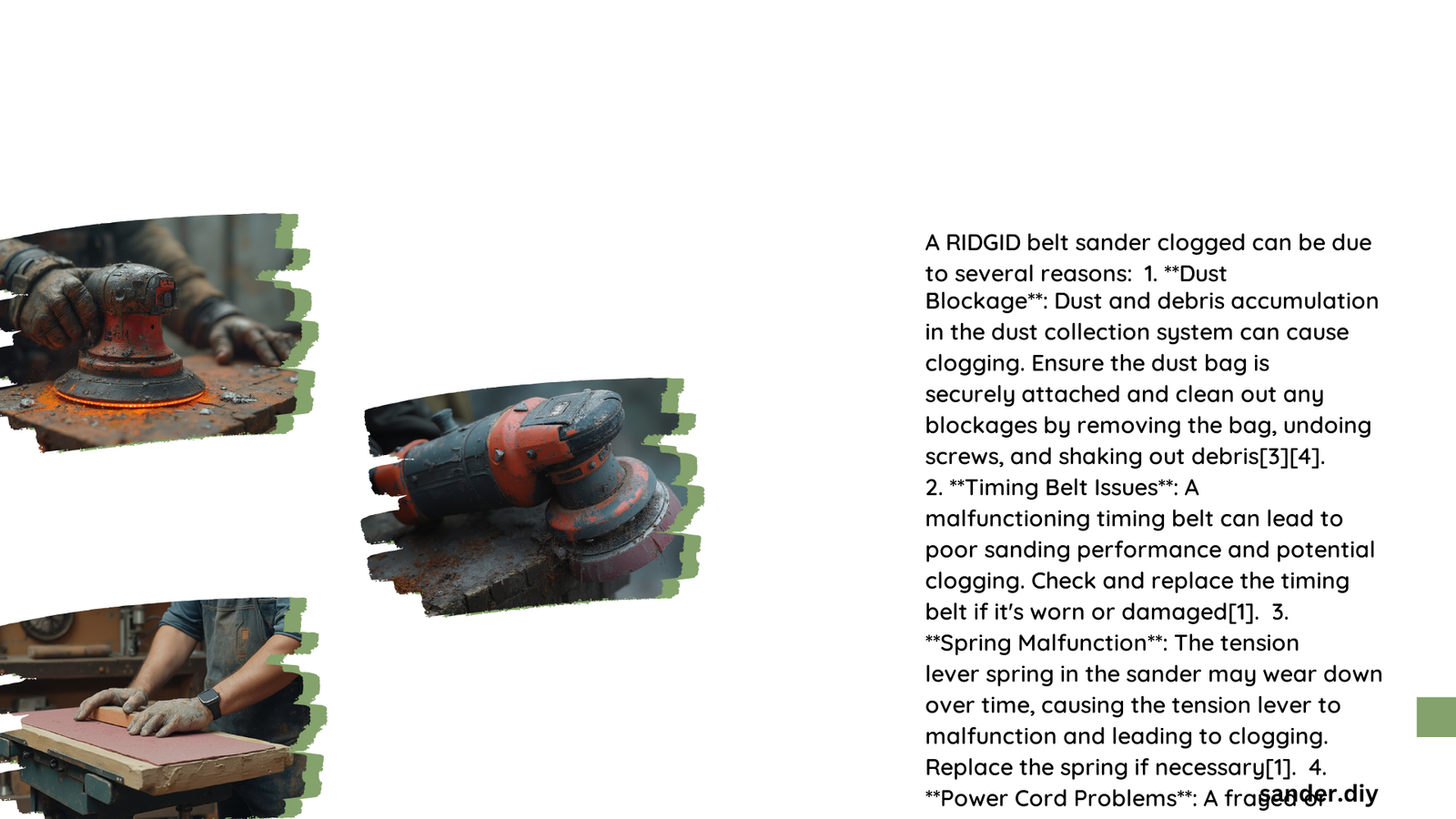A clogged Ridgid belt sander can significantly impair your woodworking performance, causing reduced dust collection efficiency, increased motor strain, and potential equipment damage. Dust accumulation in the sander’s collection system creates blockages that restrict airflow, diminish sanding effectiveness, and potentially lead to costly repairs if not addressed promptly and systematically.
What Causes Dust Port Blockages in Ridgid Belt Sanders?
Why Do Dust Ports Get Clogged?
Dust port blockages in Ridgid belt sanders occur due to multiple interconnected factors:
- Dust Accumulation Mechanisms
- Fine wood particles building up in collection systems
- Inadequate cleaning and maintenance practices
-
Using inappropriate sandpaper types
-
Airflow Restriction Factors
- Overfilled dust collection bags
- Narrow dust port designs
- Improper dust extraction equipment
How Can You Diagnose Dust Port Blockages?
Diagnostic Checklist:
| Symptom | Potential Cause | Severity |
|---|---|---|
| Reduced Sanding Efficiency | Partial Dust Port Blockage | Moderate |
| Excessive Dust Emission | Complete Dust Port Obstruction | High |
| Motor Overheating | Restricted Airflow | Critical |
Step-by-Step Dust Port Cleaning Process

What Tools Do You Need?
- Hand screwdriver
- Vacuum cleaner
- Compressed air (optional)
- Protective gloves
- Safety glasses
Detailed Cleaning Procedure
- Disconnect Power Source
- Unplug the belt sander
-
Remove battery if cordless
-
Disassemble Dust Collection Area
- Remove dust bag carefully
- Unscrew collection port components
-
Avoid using power tools to prevent thread damage
-
Thorough Cleaning Techniques
- Use vacuum with narrow nozzle attachment
- Clean internal dust channels
- Remove compacted dust particles
- Inspect for any visible damage
Prevention Strategies for Future Blockages
How to Minimize Dust Port Clogging?
- Maintenance Recommendations
- Empty dust collection bag after each use
- Use high-quality dust extraction systems
- Select appropriate sandpaper grades
- Implement regular cleaning schedules
What Sandpaper Types Minimize Clogging?
- Aluminum oxide sandpaper
- Ceramic-based abrasives
- Anti-clog coated sandpapers
Performance Impact of Unresolved Blockages
Potential Consequences of Ignored Dust Port Issues
- Mechanical Stress
- Increased motor wear
- Reduced sanding efficiency
-
Potential equipment failure
-
Productivity Reduction
- Slower sanding speeds
- Inconsistent surface finishing
- Higher maintenance costs
Professional Maintenance Tips
When Should You Seek Professional Help?
- Persistent blockage issues
- Visible internal component damage
- Unusual motor noise
- Significant performance degradation
Conclusion
Addressing a ridgid belt sander clogged issue requires systematic approach, regular maintenance, and understanding of dust collection dynamics. By implementing preventive strategies and thorough cleaning techniques, woodworkers can ensure optimal sander performance and longevity.
